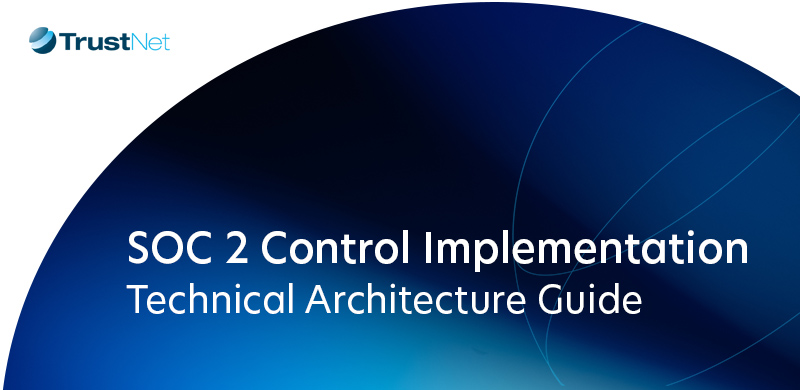Blog Cybersecurity Risk Analysis
Cybersecurity Risk Analysis

Keeping up with cybersecurity is more crucial than ever in the modern digital environment. Businesses must take preventative measures to safeguard their data and systems since cyber threats are always changing. This is where cybersecurity risk analysis comes into play.
Organizations may create plans to prevent cyberattacks by using this information to identify possible risks and weaknesses. We’ll go over the fundamentals of cybersecurity risk analysis in this article and demonstrate how it can protect your business.
Understanding Cyber Security Risk Analysis
Cybersecurity risk analysis is an organized method for identifying, evaluating, and ranking possible cyber threats against the resources of a business. Its main goal is to make sure companies are able to prevent and mitigate cyber hazards in a proactive manner, protecting vital data and systems in the process.
Key Components of a Comprehensive Analysis
— Asset Identification
-
- Hardware: All physical devices used within the organization.
- Software: Applications and programs critical to operations.
- Data: Sensitive information that needs protection.
- People: Employees who have access to the systems and data.
— Threat Identification
Understanding potential sources of cyber threats, including hackers, malware, and insider threats.
— Vulnerability Identification
Recognizing weaknesses in the system that could be exploited by threats. This includes outdated software, weak passwords, and unsecured networks.
— Risk Assessment
Evaluating the likelihood and potential impact of identified threats exploiting vulnerabilities. This helps prioritize which risks need immediate attention.
— Reporting
Documenting the findings of the risk analysis and outlining recommended actions. This report serves as a roadmap for implementing security measures.
For more on our Cyber Risk Assessment services, Click Here
Steps in Conducting a Cyber Security Risk Analysis
A comprehensive cybersecurity risk analysis involves a number of steps to make sure that all possible risks are found and mitigated. Here’s a detailed look at each step involved:
1. Asset Examination
— Documenting All Devices and Network Connections:
Create a comprehensive inventory of all hardware, software, and network components used within the organization.
— Identifying High-Value Targets:
Determine which assets are critical to business operations and could cause significant damage if compromised.
— Mapping Data Storage and Access Points:
Understand where sensitive data is stored and who has access to it, ensuring secure storage and controlled access.
2. Vulnerability Assessment
— Common Weak Points:
Identify typical vulnerabilities such as Internet of Things (IoT) devices, email systems, and outdated software.
— Identifying Company-Specific Vulnerabilities:
Evaluate unique weaknesses specific to the organization’s infrastructure, such as bespoke applications or internal processes.
3. Threat Intelligence
— Types of Threat Actors:
Recognize different types of cyber threat actors, including cybercriminals, nation-states, and hacktivists.
— Understanding Attacker Motivations and Methods:
Gain insights into why attackers might target the organization and the tactics they might use.
— Prioritizing Threats Based on Likelihood and Impact:
Assess which threats are most likely to occur and which would have the most significant impact.
4. Control Assessment
— Evaluating Existing Security Measures:
Review current security protocols and measures in place to protect against identified threats.
— Gap Analysis Between Current Controls and Potential Threats:
Identify where existing controls fall short in addressing the identified vulnerabilities and threats.
— Common Security Controls:
Standard measures include firewalls, password protocols, encryption, and regular software updates.
5. Risk Reporting and Mitigation Planning
— Documenting Identified Risks and Vulnerabilities:
Compile a detailed report outlining all discovered risks and weak points.
— Developing Recommendations for Risk Mitigation:
Propose actionable steps to address and mitigate identified risks, including enhancing existing controls or implementing new ones.
— Prioritizing Security Improvements:
Rank the recommended actions based on their urgency and potential impact on reducing overall risk.
By following these steps, organizations can create a robust cybersecurity framework that not only addresses current vulnerabilities but also anticipates and prepares for future threats.
Benefits of Regular Cyber Security Risk Analysis
Conducting regular cybersecurity risk analysis offers numerous benefits that help organizations stay ahead of potential threats and fortify their defenses. Here are some key advantages:
Proactive Threat Prevention
— Early Identification of Risks:
Regular analysis allows organizations to detect vulnerabilities and threats before they can be exploited, enabling proactive measures to mitigate them.
— Continuous Improvement:
Ongoing assessments ensure that security measures evolve alongside emerging threats, maintaining robust protection over time.
Enhanced Incident Response Capabilities
— Preparedness:
By understanding potential threats and vulnerabilities, organizations can develop comprehensive incident response plans tailored to specific risks.
— Swift Action:
With predefined response strategies, organizations can react quickly and efficiently to security breaches, minimizing damage and downtime.
Improved Overall Security Posture
— Holistic Protection:
Regular risk analysis ensures that all aspects of the organization’s security are continuously evaluated and improved, fostering a more secure environment.
— Informed Decision-Making:
Data gathered from regular analyses helps in making informed decisions about security investments and resource allocation, maximizing the effectiveness of cybersecurity efforts.
Implementing a Continuous Monitoring Approach
Importance of Ongoing Assessment
— Dynamic Threat Landscape:
Cyber threats are always changing, with new vulnerabilities emerging as technology advances. Continuous monitoring helps organizations stay ahead of these evolving threats.
— Timely Detection:
Ongoing assessments ensure that any new vulnerabilities or unusual activities are quickly identified, allowing for immediate action to mitigate risks.
Tools and Techniques for Continuous Monitoring
— Automated Monitoring Tools:
Utilize software solutions that automatically monitor network traffic, detect anomalies, and alert security teams in real-time.
— Intrusion Detection Systems (IDS):
Deploy IDS to identify potential breaches or suspicious activities within the network.
— Security Information and Event Management (SIEM):
Implement SIEM systems to collect, analyze, and correlate security data from various sources, providing a comprehensive view of security events.
— Vulnerability Scanning:
Regularly scan systems and networks for known vulnerabilities using automated tools, ensuring timely patching and remediation.
Integrating Risk Analysis into a Broader Security Strategy
— Holistic Security Approach:
Incorporate continuous risk assessment into the overall security strategy to ensure that all aspects of the organization’s defenses are aligned and robust.
— Regular Updates and Reviews:
Continuously update and review security policies, controls, and incident response plans based on the findings from ongoing assessments.
— Employee Training and Awareness:
Educate employees about the importance of cybersecurity and their role in maintaining it, fostering a culture of security awareness.
Emerging Trends in Cyber Security Risk Analysis
AI and Machine Learning in Threat Detection
— Enhanced Threat Detection:
AI and machine learning algorithms can analyze vast amounts of data at incredible speeds, identifying patterns and anomalies that may indicate a cyber threat.
— Predictive Analytics:
With the help of these technologies, businesses may use predictive analytics to identify possible risks before they materialize and take preventative measures.
— Automated Response:
AI-driven systems can automate responses to detected threats, reducing response time and minimizing the impact of security incidents.
Cloud Security Considerations
— Shared Responsibility Model:
With cloud computing, security responsibilities are shared between the cloud service provider and the organization. Understanding this model is crucial for effective risk management.
— Data Protection:
Ensuring that data stored in the cloud is encrypted and that access controls are robust is essential for protecting sensitive information.
— Compliance and Governance:
Organizations must ensure that their cloud security practices comply with relevant regulations and standards, which necessitates regular reviews and updates to security policies.
Impact of Remote Work on Risk Analysis
— Increased Attack Surface:
The shift to remote work has expanded the attack surface, as employees access corporate networks and data from various locations and devices.
— Endpoint Security:
Securing endpoints such as laptops, mobile devices, and home networks is critical to protect against potential breaches originating from remote work environments.
— Employee Training:
Educating remote employees on best practices for cybersecurity, such as recognizing phishing attempts and using secure connections, is more important than ever.
Best Practices for Effective Cyber Security Risk Analysis
To conduct an effective cybersecurity risk analysis, it’s crucial to follow best practices that ensure comprehensive and actionable results. Here are three key strategies:
Involving Key Stakeholders Across the Organization
Engage stakeholders from various departments, including IT, legal, HR, and executive management. This ensures a holistic understanding of potential risks and more robust security measures.
Leveraging External Expertise When Needed
Involve external cybersecurity experts or consultants who bring specialized knowledge and experience, providing insights that may not be available internally.
Aligning Risk Analysis with Business Objectives
Ensure that the cybersecurity risk analysis aligns with the organization’s broader business objectives, helping to prioritize risks and allocate resources effectively. By doing so, security efforts support and enhance overall business goals.
Case Studies: Careington and TrustNet
Careington faced significant IT challenges and sought a holistic solution to enhance the security and efficiency of their digital infrastructure while ensuring continued compliance with regulatory standards. They collaborated with award-winning managed security and compliance services provider TrustNet to address these needs.
Services Implemented
— Risk Assessment:
Conducted to understand Careington’s exposure to various cyber threats.
— Penetration Testing:
Provided accurate insights into specific vulnerabilities, compliance gaps, and other system weaknesses.
— PCI DSS Compliance:
Ensured sustained compliance with the Payment Card Industry Data Security Standard (PCI DSS).
Outcomes
— Enhanced Security Posture:
The risk assessment and penetration tests highlighted critical vulnerabilities and compliance gaps, enabling Careington to prioritize remediation efforts strategically.
— Improved Compliance:
Sustained compliance with PCI DSS was maintained, ensuring that Careington met all relevant regulatory standards.
— Informed Decision-Making:
Insights from TrustNet’s assessments helped Careington’s decision-makers take appropriate actions to future-proof their business and protect their customer base.
Final Thoughts on Cybersecurity Risk Analysis
Cybersecurity risk analysis is a cornerstone of building cyber resilience. Organizations may improve their overall security posture, proactively avoid attacks, and strengthen their incident response capabilities by methodically finding and resolving vulnerabilities.
Ultimately, in a constantly changing cyber ecosystem, comprehensive risk analysis enables businesses to safeguard their digital assets, uphold compliance, and inspire trust among stakeholders.
Contact our Experts today.




